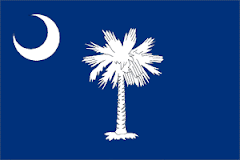
The marriage of NBC and Comcast feel right to me. ESPN has proven that owning sports content rights can be very profitable. Before ESPN, everyone thought sports programming was simply a nice lead-in to network programming or a compliment to news operations. ESPN proved that you can make money at sports and you don't need any other non-sports content to do that. Because markets are efficient, it was inevitable that someone would create a competitive programming and distribution business. Not that NBC-Comcast will be exactly like ESPN, but it will have the opportunity to do what ESPN does - be both global and local at the same time.
As mass markets divided into micro, niche and tribal markets over the last decade or so, ESPN was there to provide the very specific content to those consumers in search. While reaching these niche markets (billiards, bass fishing, NASCAR, high school sports, etc...), lately through multiple channels of distributions, ESPN was also able to pay the rights necessary to own the national/international content that drives large ratings and large revenues. This ability to customize programming to address hundreds of affinity groups while maintaining a national footprint for big events has made ESPN truly unique and powerful. It is good evidence of Al Ries's law of markets that tells us that over time, markets divide rather than converge.
The NBC-Comcast deal is good for consumers and for sports content providers. Robert Wussler, formerly head of CBS Sports and CBS Networks, used to tell me that nothing will ever be more important than the content. He told me, "be in the content business and you will always have programing partners." Neal Pilson, who followed Wussler at CBS Sports, commented recently that this was, "the biggest thing that has happened in my 40 years in broadcasting." With Comcast's regional sports networks and NBC's cable networks and national system, the new holdings company will have the flexibility to shift on demand to meet the customer demands of local and national audiences - creating the ability for marketers to target consumers efficiently in the process. This also very good news for the content providers. In order to continue to grow television revenues, leagues and content generators were all forced to consider the creation of their own networks. With two or three programmers possessing the wherewithal to pay those rights fees, that trend will likely slow or perhaps even end for now.







